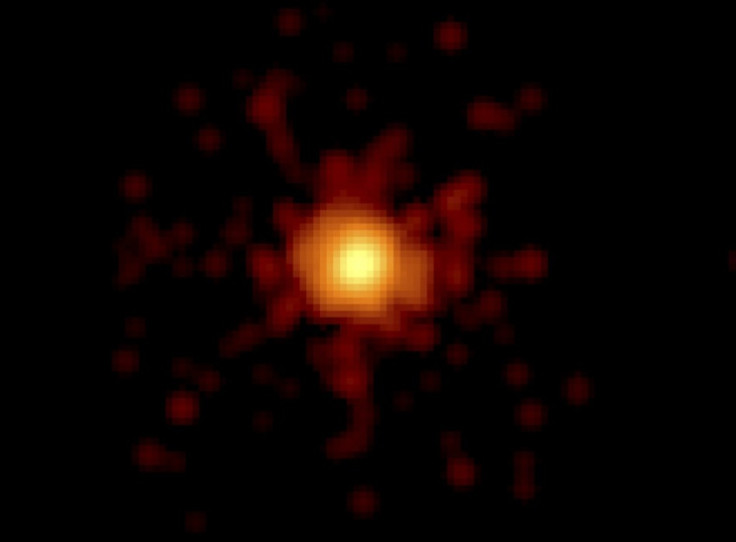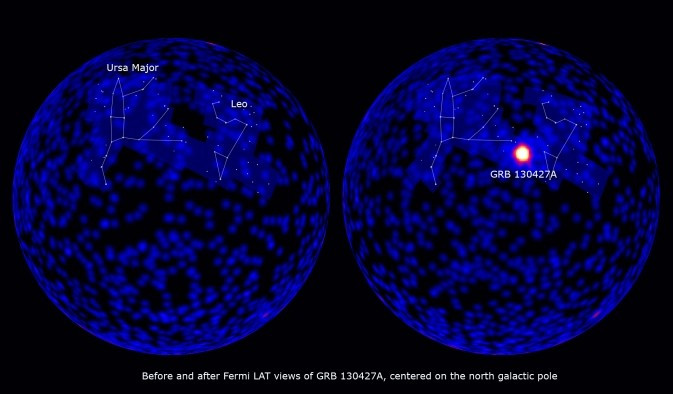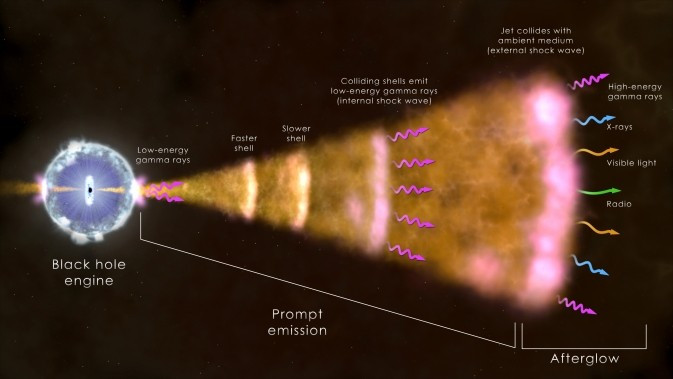Burst of the Century: Black Hole Birth Captured on Film

The birth of a black hole has been captured on film by Nasa scientists, with experts saying the explosion was one of the brightest gamma-ray bursts ever seen.
Telescopes in New Mexico and Hawaii received the "birth announcement" for a black hole in April this year through a bright cosmic burst, astrophysicist Tom Vestrand said.
Published in the journal Science, study co-author James Wren said: "It's the biggest, brightest one to happen in at least 20 years, and maybe even longer than that."
The birth was captured by the Raptor telescope system which scans the sky for anomalies, such as flashes from a dying star as it collapses and becomes a black hole - the black hole captured came from the constellation Leo in the form of a bright flash of light accompanied by a powerful burst of gamma-ray emissions.

The blast gave off some of the highest energy gamma-ray bursts ever recorded for such an event and the telescope showed how the black hole gave off an "afterglow".
Przemek Wozniak, co-author of the paper, said: "This afterglow is interesting to see. We normally see a flash associated with the beginning of an event, analogous to the bright flash that you would see coinciding with the explosion of a firecracker.
"This afterglow may be somewhat analogous to the embers that you might be able to see lingering after your firecracker has exploded. It is the link between the optical phenomenon and the gamma-rays that we haven't seen before, and that's what makes this display extremely exciting."
Vestrand added: "This was a Rosetta-Stone event that illuminates so many things - literally. We were very fortunate to have all of the NASA and ground-based instruments seeing it at the same time.
"We had all the assets in place to collect a very detailed data set. These are data that astrophysicists will be looking at for a long time to come because we have a detailed record of the event as it unfolded."

Paul Hertz, director of Nasa's Astrophysics Division in Washington, said this type of event only happens once or twice every century, so were fortunate to have captured it.
Researchers also say the intensity of the burst has led them to question their previous assumptions about the nature of the universe.
Gamma-rays are the most energetic form of light and those measured from the black hole birth were brighter than any other previously recorded within the first three seconds.
"The spectacular results from Fermi [Nasa's Gamma-ray Space Telescope] show that our widely accepted picture of MeV gamma rays from internal shock waves is woefully inadequate," said Rob Preece, from the University of Alabama.
© Copyright IBTimes 2025. All rights reserved.






















